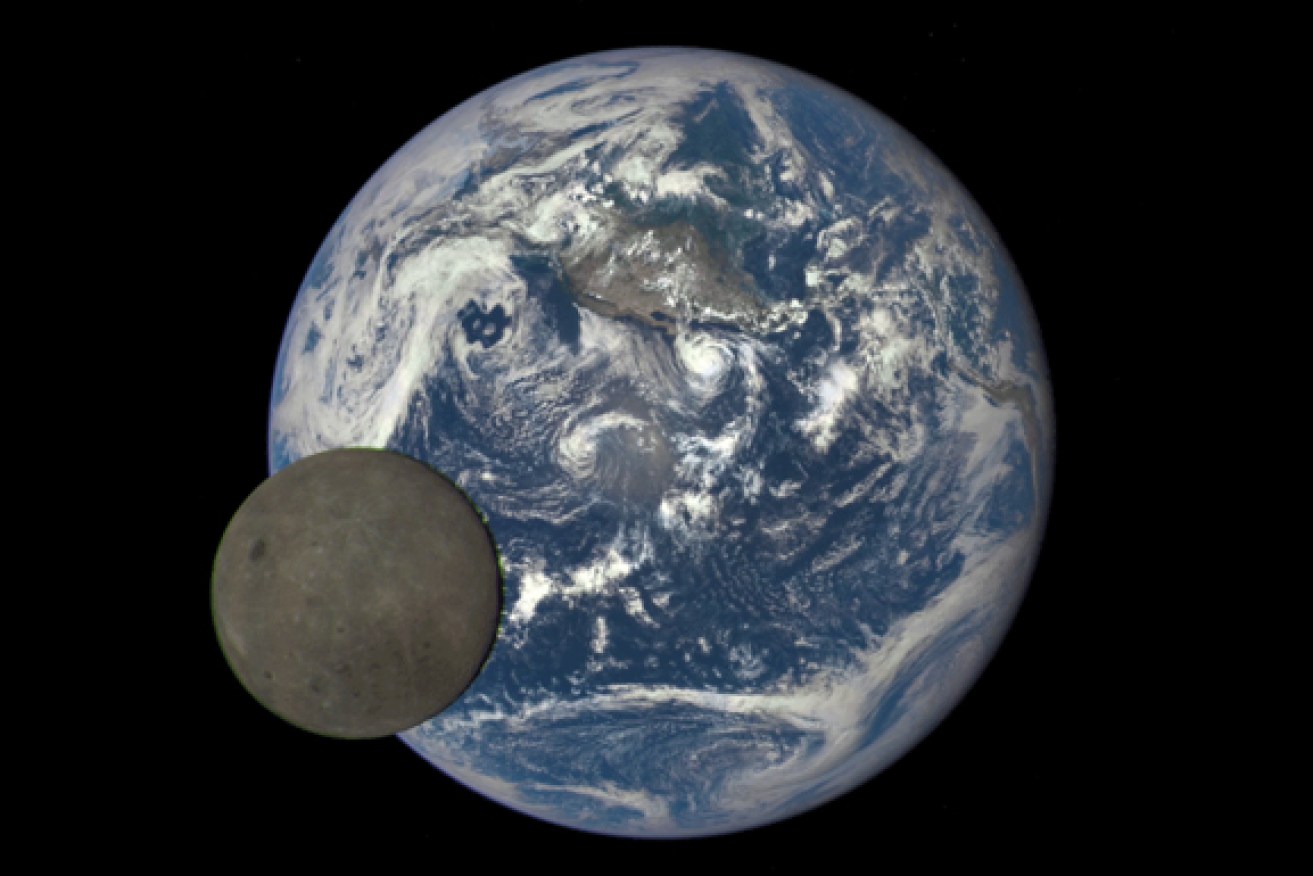What we learned this week in the world of science

NASA
This week in science, we found out that Americans are smart, aliens are dumb and the depths of space are weird.
The Chinese are creeping onto Pink Floyd’s turf and somewhere in Spain there’s a 54-year-old man walking around with a heavy metal rib cage.
• NASA reveals new, close-up photos of Pluto
• Google Earth selects its best images from space
• Giants from the abyss still haunt our planet
Oh, and Tasmanians are foreigners. But we already knew that.
What you might not know is the correct name of an icy-cored object hurtling through space. If not, this week’s quiz could be tough.
Strap yourself in for a recap of the biggest, weirdest and most exciting recent developments in research and technology.
Are you smarter than the average American?

Six per cent of Americans got a perfect score. Photo: Getty
This week, the Pew Research Institute released its results on the science literacy of adults in the US.
The results of the survey, which focused on knowledge of physical-based science, may surprise you.
Contrary to the stereotype of the ‘dumb American’, the average score of the 3,500 adult respondents was eight out of 12.
Sadly, other aspects of the study were not so surprising. Women consistently scored lower than men regardless of education and age, in line with the researcher’s predictions.
Do you think you have what it takes to beat the average? Find out by taking the multiple choice quiz here.
China aims for the Dark Side

The dark side isn’t quite so dark after all. Photo: NASA
In a bold move for its developing space program, China has announced it intends to land a probe on the dark side of the moon.
Not just an album by Pink Floyd, the moon’s dark side is a real place — and isn’t always dark.
It is the side of Earth’s natural satellite that always faces away from our planet as a result of the tidal lock between the two celestial bodies. It is still frequently exposed to sunlight.
Because this region constantly faces away from the Earth, it is an ideal location to study low frequency radio waves, as it is shielded from the white noise we humans so often produce.
The Chinese mission hopes to study these radio waves from the ‘dark side’ before 2020.
Tasmania really is a foreign land

We believe the local population to be Taswegian. Photo: Shutterstock
Scientists recently revealed that Tasmania wasn’t always so close to the mainland.
An examination of rock sediments uncovered the Apple Isle’s secret past.
According to two Tasmanian geologists, it was once wedged between what is now North America and Antarctica.
The most plausible theory is that Tasmania hitched a ride south on the Antarctic continent before breaking away and becoming a much-loved part of Australia sometime between the Cretaceous and Cainozoic periods roughly 65 million years ago.
Aliens are probably stupid. Or not

Please don’t let the galaxy be full of Jar Jars.
A recent survey intended to uncover signs of super intelligence in far off galaxies has come up empty handed.
The research was based on the idea that extremely advanced civilisations would be capable of harnessing energy at a galactic level. It was suggested that manipulations of this kind would likely give off an enormous amount of waste energy detectable from Earth.
So far, no such tell-tale signs have been found that couldn’t be explained by other phenomena.
But don’t despair, my tin foil hatted friends, as we may simply be too early. Due to the vast expanses between galaxies, it can take anywhere from two million to several billion years for light to reach Earth, depending on location.
Thus, the data used in the study was potentially billions of years old and not an accurate reflection of how the universe looks today.
Still, the survey shows that even as early as several billion years ago aliens weren’t masters of these galaxies in ways we might have expected. Or hoped.
First 3D printed titanium rib cage successfully implanted

Australian scientists developed the high-tech rib replacement. Photo: CSIRO
In a breakthrough for medicine, the first operation to implant a human with a titanium rib cage was a success in Spain.
The rib cage, which looks more like an X-Men prop than medical implant, was designed and manufactured by the CSIRO here in Australia.
The process used the latest in 3D-printing technology, which allowed for precise tailoring for the patient, whose rib cage and sternum had been damaged by a cancerous tumour.
Researchers working on the project expressed optimism for the future of the industry, as 3D-printing technology becomes more advanced and widely used.
Impossible structure found six billion light years from Earth

The unknown galactic structure, if real, is the biggest ever found. Photo: Lajos Balazs
Cosmologists across the world have been left dumbfounded after a series of gamma ray bursts from nine distant galaxies reached Earth.
The incredibly luminous and brief events hint at an underlying ring-like structure which could be up to 5 billion light years across.
The existence of such a large universal structure defies known laws of cosmology which places an upper limit of size for universal structures at 1.2 billion light years across.
The region of space where this is occurring currently lies approximately six billion light years from Earth which is roughly 11 trillion times the distance between our Sun and Pluto.
At this distance the mysterious structure occupies a region of our sky roughly 70 times larger than the full moon.









